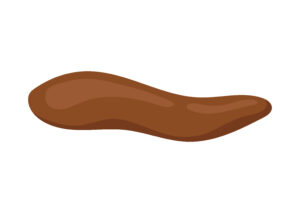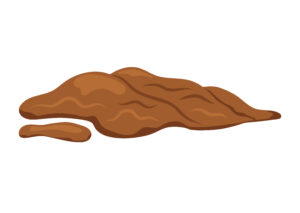
Let’s talk about something all paw-parents deal with — dog poo!
That’s right, we’re diving into the world of your four-legged friends’ poo-business, because when it comes to your dog’s health, their stool can tell you a whole lot!
Yes, it might not be the most glamorous part of being a dog parent, but checking out your dog’s number two is actually one of the easiest ways to keep tabs on their well-being. From frequency, colour to consistency, all of these are indicators of a healthy dog.
What Does a Healthy Dog Poo Look Like?
A good dog poo usually shares these traits:
Chocolate brown in colour
Log-shaped and firm, but not rock-hard
Moist (a play doh consistency)
Easy to pick up
If this is your pup, the chances are they have a very happy tummy!
What if your dogs’ poo is soft and a little mushy?
If it’s shaped but mushy, kind of like soft ice cream, your dog might be going through:
A mild dietary change – we always advise a slow transition to a new food over 7-10 days to help allow sensitive tummies to adjust to their new feed
A snack they weren’t supposed to have – not all human food is good for a dog’s digestion, however much they want to try what we are eating
Stress or excitement -yes, dogs get the nervous poos too!
A soft, mushy poo is usually not a big deal unless it sticks around for more than a day or two, if this is the case get in touch with your veterinary clinic for more guidance.
Is Your Dog Suffering with Diarrhoea?
If your dogs’ poo is runny or even pure liquid, this can be a cause of concern. Whether it’s due to adjusting to a new food or medication or even being slightly stressed it can all have an unpleasant effect on your pup’s tummy. Occasionally it can also be a sign of an underlying health condition.
Could be caused by parasites
Infections
Food allergies
Call your vet if it lasts longer than a day or if there’s vomiting, lethargy, or blood. Diarrhoea is a symptom, not a diagnosis.
Remember – dehydration is always a risk when your dog is suffering from diarrhoea -especially in puppies.
Is your dog pooing hard dry lumps?
Tiny, hard, dry poos can be a sign of:
Dehydration – increase their fluid intake.
Constipation
Not enough fibre
Not moving enough – up their exercise schedule slightly if possible
Holding it in too long
If it keeps happening, it might be time for a visit to the vet to ensure your pup is not uncomfortable.
The Colours of Dog Poo – what is normal?
The colour of our dogs’ poo can help indicate a lot.
Chocolate Brown: All good!
Green: Could be grass, or gallbladder issues. It may just be down to eating a lot of the green good stuff but worth keeping an eye on.
Yellow or Orange: May indicate liver or biliary issues – ask your vet for advice.
Black & Tarry: This could mean a small amount of internal bleeding — contact the vet as soon as possible for further guidance.
Red streaks: Usually fresh blood from the colon or anus — possibly haemorrhoids or a scratch, but still worth checking.
White spots or rice-like bits: Possible tapeworms! Not pleasant but treatable, contact your vet for advice.
What about Puppies?
If you have a new puppy and they are suffering with a runny tummy, this may be down to the stress (and excitement) of travelling to their new forever home and meeting their new family. Be sure to offer a constant supply of fresh clean water as diarrhoea in puppies can quickly cause dehydration. If this continues past a few days consult your vet for advice.
Another thing to look out for in your puppies poos is spots of blood. Blood in your pups’ poo can seem alarming at first and in most cases is caused by a scratch in the colon or anus. However, as your pup is so young and their immune system being a lot weaker than older dogs, it’s definitely worth checking with your vet to rule out any illness or infection.
Other Poo Clues to Watch out for
We have checked of colour and consistency but is there anything else to look out for in your dog’s poo?
Mucus: A jelly-like coating might signal inflammation in the colon.
Frequency: Once or twice a day is normal for most dogs, but it depends on their diet and routine, if there is a sudden increase or decrease, consult your vet..
Straining: If your pup is trying to go but nothing’s happening, that’s a sign of constipation.
Bum scooting – A common action for dogs especially if a loose stool is their ‘norm’, if this suddenly becomes more frequent, your dog may be a little uncomfortable and a visit to the vets might help.
A good poo can make your dogs’ day, and a bad one can help you catch issues before they become serious. So next time you bend down to scoop it up, give it a quick glance. Monitoring your dog’s poo isn’t weird — it’s responsible!
We know you know your beloved four-legged friend better than anyone, so if you have any causes for concern about your dog’s health and wellbeing, contact your trusted veterinary clinic for guidance as soon as possible.







